#truly INSANE behaviour why is the marketing built like this
Explore tagged Tumblr posts
Text
POST THIS MONTHS AGO. POST THIS WHEN YOU DELETE KHUXDR AT LEAST COME ON
#kingdom hearts#khml#truly INSANE behaviour why is the marketing built like this#why do you go silent for almost a goddamn year before finally going “yeah lol so not in 2024 actually” OH REALLY???? NO WAY!!!#I Am Surprised By This Information
13 notes
·
View notes
Photo
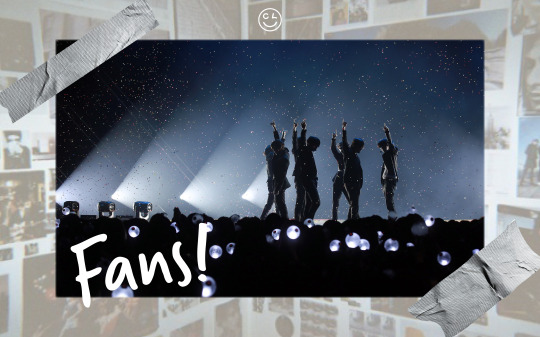
3.4.3 — SPMP:
1st + Review
From all my recent research and considering the work that I was building up towards FMP prior to Term 3. I thought I’ll be able to fuse them together and propose a new way of communicating the idea. This is the pitch deck I presented and my findings after the tutorial.

The project is inspired from content from my dissertation, where I investigated how the bedroom is deeply rooted into the female identity since so much of our culture is cultivated there. After all, the patriarchy has domesticated us. Despite the physical limitations, we were still able to cultivate a rich culture and have a valuable experience, engaging with the wider world. This can be seen through the posters of on our walls and the records we collect, as an example.

I also started thinking about the ways girl hood is documented formally in art forms. This is where I found Laura Greenfield’s photo book called “Girl Culture”. I felt this is a good touch point, because it offered an honest portrayal of what it means to be a girl. It’s raw and untailored. It has a documentary feel to it and offers a “just is” observational perspective. This is a rare find. I feel like the documentation of girl culture and femininity is always edited, sanitised and “perfected”. Whether in other photographic works or in films.
In addition, when girl culture is talked about; the focus is more or less on sexuality. It feels like a limited point of view. There is more to our formative years beyond this. During this period, we begin to like things and start forming our own tastes. In a way, we’re laying out foundations of identities then. For instance, it has been reported that our music tastes peak at 14 (New York Times Article: https://www.nytimes.com/2018/02/10/opinion/sunday/favorite-songs.html).

I would like to offer something different beyond this narrative and this is where “being a fan” comes in. Like I mentioned earlier, this feels like a rite of passage for girls, especially in a musical context. This is embodied the most in boybands; they are propped up by a predominantly female fanbase. In turn, making it a feminine space.
I also refined my investigation to the K-Pop scene, because they have a very specific fan culture and they pretty much pioneered boybands. I decided to focus BTS and their fanbase Army, since they capture the zeitgeist of this culture the most; they are the moment.
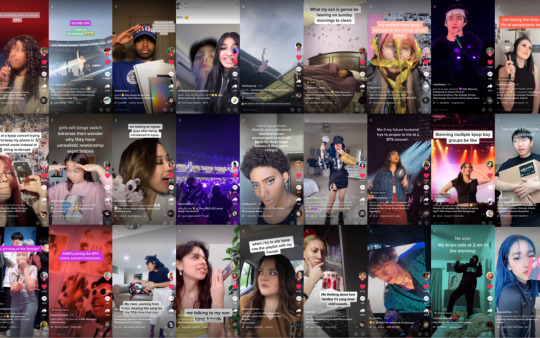
I would like to offer something different beyond this narrative and this is where “being a fan” comes in. Like I mentioned earlier, this feels like a rite of passage for girls, especially in a musical context. This is embodied the most in boybands; they are propped up by a predominantly female fanbase. In turn, making it a feminine space.
I also refined my investigation to the K-Pop scene, because they have a very specific fan culture and they pretty much pioneered boybands. I decided to focus BTS and their fanbase Army, since they capture the zeitgeist of this culture the most; they are the moment.
I looked how this looks like offline and online. Although its most evident in concert venues, the way they experience fandom is mainly in the comfort of their own bedrooms; making it a very specific branch of “bedroom culture”. This can be evidenced by the content they make and share with each other online. A good example of this are their own self made videos posted on TikTok.
With a simple scroll through the tags, you can see the love and fun shared. I feel like this perspective is not shown often in the mainstream lens or the general narrative, when female culture is talked about.
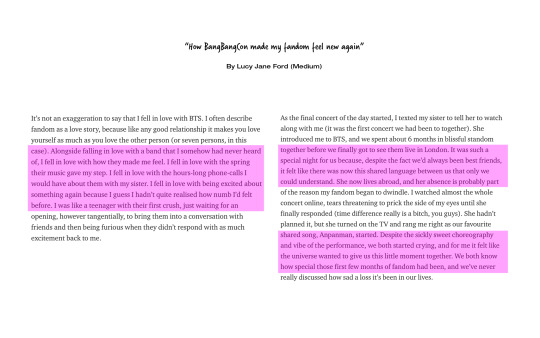
It was then natural for me to look into the interpersonal relationships built and caused by this culture. I found this article (see image above, featuring take aways) that perfectly encapsulates why fandom culture is special. Again, since its emotional impact and the positive effects it has on people is often undocumented or overlooked. This article was heartwarming to read and shows how special fandom could be. Its easy to do this since its so specifically female and intrinsically tied with emotions, which is often frowned upon generally by society.

I also wanted to investigate the theoretical side to this too. In my research, I realised that people had tried to put this phenomenon into some theoretical contexts, referencing sociology to marketing. There was a conference held in Kingston University, dedicated to BTS earlier in the year. I’ve listed the papers/talks that I found interesting, focused on fandom culture (see image).
I feel like there’s a useful conversation taking place about this. Through this discovery, I feel like I can add more to this and there’s an audience waiting for more content about this subject.

This made me think about a documentary that I watched recently called “The Last Dance”. It documents Michael Jordan and the Chicago Bull’s legacy as a sports team, especially at their prime in the 1997 Play Offs. I admired how the documentary protects their legacy and its told in such a loving lens. I feel like there hasn’t been anything like this for their feminine counterparts (boyband and fan culture). Especially considering how the crowds and screaming can be found in both cultures, except that the audience’s gender is different (for the large part).

As I’m distilling my findings and trying to find my own conclusions, I came across this important quote by Dr.Epps-Robertson. If we wait for others to tell this particular story on feminine fan culture, it may not be an accurate portrayal of what it truly is and a lot of it is going to be lost.

In fact, its already is. At present, the majority of the stories that documents feminine fan culture is very negative. Its is selective its in portrayal. It likes to dwell on the foul behaviour. Although there is some negatives that comes out of this culture (stalking, obsession etc), it is not the only aspect that is made up of. It’s only a small fraction of it. They miss out on the joyful things that can come out from fandom and the community formed by it (e.g. TikToks, mentioned earlier). For the large part, they are misunderstood because the people who are documenting this are outsiders to this culture. Middle aged men writings and musings about music for women and experiences by young women will never be accurate critique of the culture. It is not meant for them and they will never understand.
It also made me think about how female passion is portrayed differently. I feel like this is not far of how this masked under the guise of hysteria; a belief that has harmed women for a long time. The prosecution of women for having emotions are deeply embedded into our history. Unlike in the Michael Jordan documentary, male fans are portrayed as passionate. Fangirls, on the other hand, are portrayed as crazy and insane. However, both are just displaying passion.
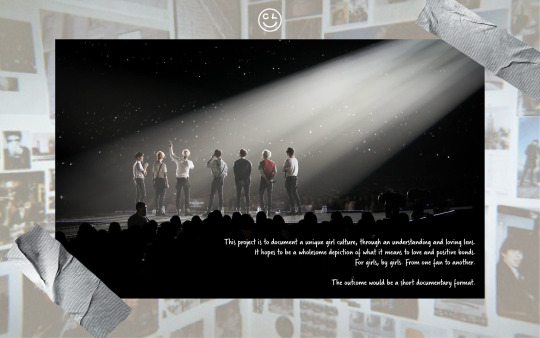
With all of that in mind, I wanted to take the matter in my own hands and create a mini-documentary, recording feminine passion and culture around it through a boyband focus (BTS particularly). I wanted to be able to protect this experience and tell it accurately.
This project is to document a unique girl culture, through an understanding and loving lens. It hopes to be a wholesome depiction of what it means to love and positive bonds it cultivates. The project will be for girls, by girls. From one fan, to another.

Obviously, I need to re-think how documentary could be presented. Quarantine has limited my options. However, I began my research by looking into the traditional documentaries and see how I can subvert it after.
“I used to be normal” is an interesting example to look into because its follows an interview style. The story comes from directly from the fangirls themselves. It captures their enthusiasm and wholesomeness well. I may not have the luxury of being able to follow people’s journeys across the span of 4 years like in documentary, but I can still conduct interviews via webcam.
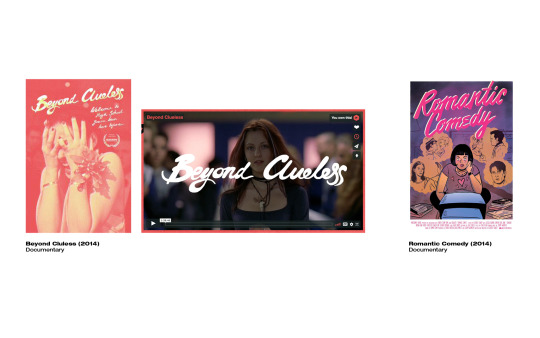
“Beyond Clueless” and “Romantic Comedy” are good examples too. They are both documentaries told through archive material. This is an ideal technique to use as I can just use original content by the band and construct the narrative using it. These can be easily found online. More so, I won’t be violating any copyright laws as long as I keep the clips less than 30 seconds.
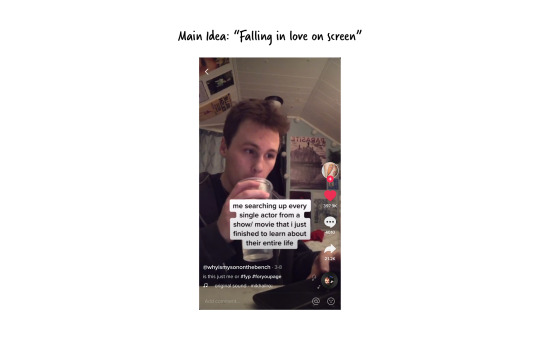
That said, I really wanted to use the idea of “falling in love through the screen”… because I feel it encapsulates the experience perfectly; this is where fangirl culture begins and ends… you discover the band and their music through your screen, whether through the phone or the computer… and you fall in love with them gain when you take pictures of them in real life when you attend their cultures… also, it is reminiscent of how they share with their community (through TikTok, Twitter and other forms of social medias).


I want to use personal videos to portray the narrative, combined with archive material such as online videos and concert footage. Mimicking the way they hold their phones up in concerts.

I also want to crowd source some memorabilia too. Another type of imagery to compliment the archive footage.

I also like the idea of potentially using google maps to mimic the concert experience (e.g. going to the venue with friends).
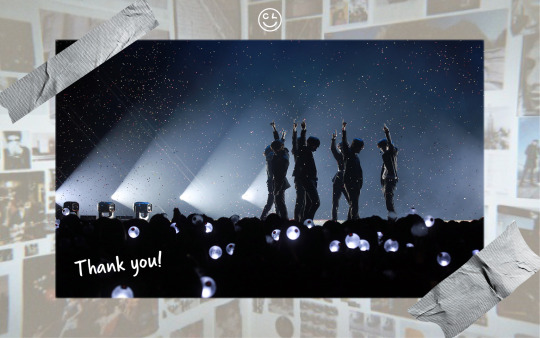
REVIEW
Unfortunately, during the review, I discovered that the idea too big for the timeframe and the limitations of the project. Despite being able to rethink the way the documentary could be presented, its still too big, especially considering how short the timeframe (documentaries take a long time to make) and its risky to wait for interviewees. Also, it was flagged up the narrative isn’t quite clear yet - I need to decide what is the story I wanted to tell.
At first, I felt disappointed in the review since I poured a lot of time into my research and thought I was building something that was viable. However, through hindsight, it wasn’t the right idea for the project. After much thought, it was still too close to my original FMP idea and I think I would disappoint myself if I can’t execute it in a way I originally wanted to. I think it would be best to execute this on a later date, when I have the means to do so.
It’s time to reflect on this and see what else I could potentially work with.
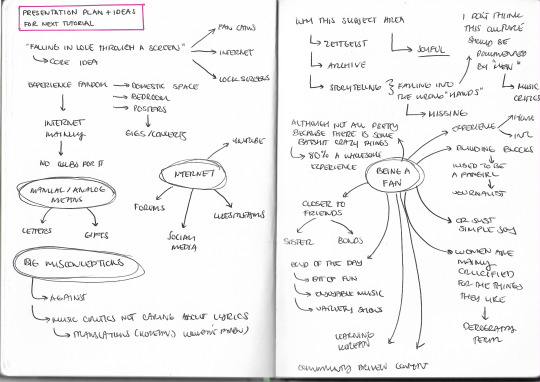
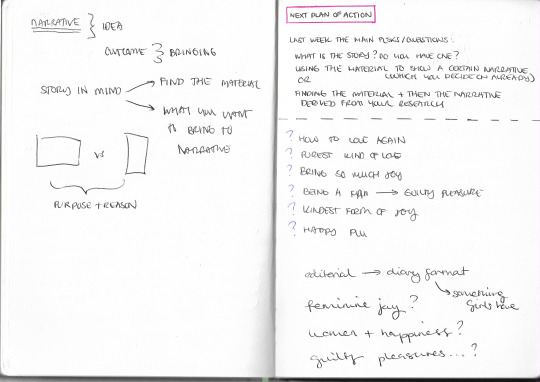
0 notes
Text
Creative Art of Doing
Why do humans delve into creative fields? Why do we do anything? These questions have a myriad of answers to them and we may never know what the correct one, or even if there is a correct answer to them. However, the key is not in the answer, but the question itself. When we “do” something, we are carrying out an action, physically articulating a verb. Creative mindsets from different walks of life are all products of these verbs. Hardwired into our genetics are two verbs which respond to the only constant thing in our lives, change. These two basic verbs drive our creative notions all over the planet (and sometimes off it) and when change occurs we ask our selves; do we oppose it or do we adapt? Most creative areas are built around either opposing or adapting, however there are a few which actually incorporate both into their framework.
The act of opposition is what is generally considered the unproductive approach and because of this it is often overlooked and the effects are not considered when decisions are made. A prime example of this is Language. Across the globe there are over 6000 different living languages [1] that are spoken but the majority of people can only speak one. It is believed that the reason so many different languages were developed is so people were able to share their skills and knowledge with the others in their own community and outsiders would be unable to access such information [2]. However as Mark Pagel says, “Language is a piece of social technology for enhancing the benefits of cooperation [2].” When communities speak different languages, cooperation between social groups is made to be very difficult. The idea of inventing communication through verbal language on the basis of ease of developing knowledge and cooperation is flawed as “language barriers” are created which oppose the the cooperation and knowledge development.
Another example of opposition acting as a key element in creative endeavours is communicated through the Pareto Principle. This states that in any creative industry people are competing to produce something and of that population almost everyone is unsuccessful and loses completely, a small minority is a tiny bit successful and a hyper minority is insanely successful [3]. The main issue with this is that those who are stuck at zero find it very hard to get the ball rolling and start. If you are a photographer on Instagram and don’t have any followers, it is very hard to get ten let alone ten thousand. These people tend to be the targets of revolutionaries as they have nothing to lose and are often promised they will thrive in the “new” industry. “These are the people that burn it all down as they oppose the system. [3]” The idea of revolting against a system that you are not successful in tends to be the extreme view of opposition however, it can result in the creation of new creative fields such as bloggers who were unsuccessful with writing their ideas down so filmed themselves and developed the popular Youtube category of Vlogging [4].
It is often said that when change comes around it is better to embrace it than reject it and unsurprisingly enough when it comes to dealing with limitations such as time and money this is usually the action taken. The creative endeavour of space craft and mission design reflects this idea however, the main limitation for them tends not to be money but physical laws and extreme forces at play [5]. The development of the craft design is generally the result of the external forces which are to large to oppose and so the design must be
adapted to deal with these. When designing the ARTEMIS telecommunications satellite in the 1990’s, the European Space Agency designers and engineers had to adapt their design to compensate for the angles the craft would be dealing with, solar radiation and transmission-wise. Rather than add more rockets to the design like they had done in the past for missions closer to Earth, they made the transmission antenna operate on a gimbal allowing it to adjust position so it always faced Earth [5]. Although this seems like a simple adjustment to the design, it was necessary due to the fact that the external forces were so large so they had to adapt to the situation and that was the result.
The surfing culture is one of those creative areas which falls under both verbs. First emerging in the 1960’s, the culture of surfing was the result of the initiation of the counter culture revolution. Sticking it to the man, not adhering to social norms and living a leisurely lifestyle all key elements in the “care free” life of a surfer and so it is obvious to see that the roots of the culture are stuck deeply in the idea of rebellion [6]. Due to the values shared with the counter culture movement, the surfing culture opposed the social standards back in the 1960’s and the 1970’s, however today the standards are very different entirely so did the culture adapt to the change? The short answer is no, society adapted to the surf culture and even began to embrace it. Many people in the 21st century appreciate the surfing aesthetic and have adopted it as their own [6], leading to the appropriation of the culture. Many aspects of surf culture are now present in popular culture such as attitude, dress and sexual promiscuity. To keep itself seperate and distinct, the surfing culture has had to adapt and now one cannot call themselves a “surfer” just because they share all the values the surfers had in the 1960’s, now the only way one can truly be identified as a surfer is by, “partaking in the embodied experience of surfing and search for the ecstatic experience of communion with the wave that surfers describe as stoke. [6]”
A very different area of creative thinking that also shares both these verbs as a basis is the idea of Reality Construction. This concept states that what we experience as reality is actually a construction of what our brain is interpreting as our surroundings. This is based on the fact that natural selection indicates that our objective realities are just an interface to guide adaptive behaviour and not true base reality itself [7]. So reality construction shows that our brain is making us adapt to different situations by showing us only what we need to know rather than feed us all the information at once. However, this idea opposes traditional Darwinian evolutionary theory which states that the genetics of an organism with more accurate reality perception are more likely to be passed on to future generations [7, 8]. This opposition however, is what drives scientific advancements showing that not all opposition is unproductive as mentioned earlier.
Creative mindsets can spawn from anything, gaps in the market, the need for social interaction or even for scientific purposes. However, there is always going to be two things that are constant in this world, the first is change. Change will always be around because that is the nature of the fourth dimension (time) and the second constant is that creative thoughts and processes will always be driven by the two verbs; Adapt and Oppose, as there is no physical way to react to change unless it is one of the two. All creative endeavours are based around these verbs, which in itself is a creative thought, so the question is how will you react to this idea; Adapt or Oppose?
References:
[1]: Gordon, R. G. (2005). Ethnologue: Languages of the world (Vol. 15). B. F. Grimes (Ed.). Dallas, TX: sil International. Chicago
[2]: Pagel, M. (2011, July). Mark Pagel: How language transformed humanity [Video File]. Retrieved from https://www.ted.com/talks/ mark_pagel_how_language_transformed_humanity
[3]: Rogan, J. (Producer). (2017, September 1). Joe Rogan Experience #1006 - Jordan Peterson & Bret Weinstein [Video podcast]. Retrieved from https://www.youtube.com/ watch?v=6G59zsjM2UI&feature=youtu.be&t=1h30m29s
[4]: Harley, D., & Fitzpatrick, G. (2009). Creating a conversational context through video blogging: A case study of Geriatric1927. Computers in Human Behavior, 25(3), 679-689.
[5]: Landgraf, M., Renk, F., & de Vogeleer, B. (2013). Mission design and analysis of European astrophysics missions orbiting libration points. Acta Astronautica, 84, 49-55.
[6]: Stranger, M. (2011). Surfing life: Surface, substructure and the commodification of the sublime. Ashgate Publishing, Ltd.. Chicago
[7]: Hoffman, D. (2015, March). Donald Hoffman: Do we see reality as it is? [Video File]. Retrieved from https://www.ted.com/talks/donald_hoffman_do_we_see_reality_as_it_is
[8]: Smith, J. M. (1988). Evolution and the Theory of Games. In Did Darwin Get It Right? (pp. 202-215). Springer US.
Any extra references used in the researching of this essay but not directly used in the essay are in the research blogs on my Tumblr: https://giannisbct.tumblr.com/search/ctec500
2 notes
·
View notes
Text
The Division review (PC)
Jesus Christ Ubisoft, you really can’t help but kick yourself in the dick, can you? Is it...is it something sexual? I mean, I’m not going to judge you, but it kinda feels like there’s something else going on here.

<Ubisoft executive masturbates aggressively>
Let’s look at the facts - you put out Watch Dogs and you lied about a whole bunch of shit in the marketing. Then the game comes out and it’s absolutely savaged by the press and public alike because the reality of the game is far from the false hype you built around it. But the interesting thing is that it’s not a bad game, not by a long stretch. It’s a fun third-person shooter with a massive open world and a deep attention to detail, entertaining mechanics (even if it does have a bit of your mindless collecting bullshit scattered around), and some top-notch production values. But you couldn’t have the public believe you were simply releasing a release a ‘good’ game, could you? No, you had to make them believe that you were releasing the BEST game, all the while knowing that the final product wouldn’t meet the promises you’d made.

I mean, you don’t have to do much to impress us anymore.
Why did you do that, Ubisoft? Had your CEO made certain commitments to the shareholders about pre-orders and day one sales figures? I genuinely can’t fathom why you would make such terrible, terrible marketing decisions when you had to know that there was going to be blowback - you had to know because you had been there before, hadn’t. Which brings me to the pertinent point: if your methods failed you multiple times before, why did you do it AGAIN?
Because here is The Division - a fun third-person shooter with a massive open world and a deep attention to detail, entertaining mechanics (even if it does have a bit of your mindless collecting bullshit scattered around), and some top-notch production values, and once again you lied about it in the marketing. And once again, when it was released, the game became a pariah - not because it wasn’t a good product, but because you fucked it over before it was even released. It didn’t stand a chance really, not with your ridiculous schemes to deceive the public with an almost sociopathic level of denial and self-delusion. What is it that the villain in one of your own games said about the definition of insanity?
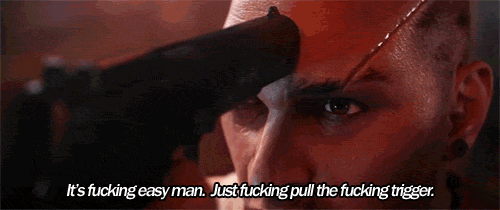
Pictured: Ubisoft.
The Division came out TWO YEARS after Watch Dogs. And you learned nothing. People should have been fired over this. Many high-ranking people should have been fired.
God damn you, Ubisoft.
The Division is a third-person sort-of-MMO set in a dystopic near-future New York City. You play a nameless and voiceless agent of The Division - a top secret unit of sleeper agents brought in when the shit well and truly hits the fan. And it has, because NYC has been decimated by a deadly man-made virus transmitted via banknotes on Black Friday. The city itself has been left near deserted but for the scant few civilians who were trapped inside the quarantine, members of the Joint Task Force, and roving bands of gangs and private military soldiers that rob and kill on-sight. Your mission is to do what the normies can’t, venturing into dangerous enemy lairs to procure people, intelligence, or simply the corpses of notorious trouble-makers.
The city is mapped, as far as I can tell, to a nearly 1:1 scale. The level of detail and effort put into the design is unprecedented; I can honestly say that I’ve never seen anything like this in my life. From the buildings that are meticulously designed inside and out, to the changing weather effects that completely alter the atmosphere of the city, to the destruction, decay, and seasonal decorations littering every single street and alley, it’s almost inconceivable the years of work that must have gone into the production of this.

<I masturbate aggressively>
The enemy leveling is handled intelligently and in such a way that a challenge always remains present, and wandering into a pack of gun-toting psychopaths can and will get you killed most of the time. It keeps you on your toes, and keeps the threat of the city real. The loot system is excellent too, and you’ll find that loot drops just rarely enough for it to feel like a real reward, yet frequently enough for you to always have something to sell or disassemble.
And while MMOs can often be troublingly unbalanced, rewarding griefers, or forcing you into playing with people who rush the objectives and leave you behind, The Division’s multiplayer elements are not so. For the most part the game is perfectly enjoyable as a single-player-only experience as the difficulty of the main missions can be adjusted to suit those that just want to get through them as well as those that want a real challenge, whilst the base difficulty of the general encounters around the city is just high enough to keep a lone player engaged and excited. You can join other human players at any point, if you so choose, and if you do the game encourages co-operation and teamwork for the most part by carefully and astutely balancing the damage taken and dealt by enemies, making for a challenging and fun multiplayer experience, and punishing players that try to rush ahead by hammering them into the ground.
The only time in which PvP is forced upon the player is the Dark Zone: a no-man’s-land located in the centre of Manhattan, and cordoned off from the rest of the island by towering walls. The Dark Zone is an anything-goes environment filled with the best loot in the game, difficult computer-controlled NPCs, and (on weekends) human players looking to score some sweet treasure. You can be attacked by humans only if you’re carrying loot yourself, and can traverse the area safely (at least safe from human players) by simply walking around empty handed. However, if you do collect some gear, you can only take it out of the Dark Zone by initiating a timed helicopter extraction at a few select areas of the map. During the two and a half minutes the extraction takes you will often be assaulted by computer controlled enemies, although players in your sector can also see that the extraction is taking place and can either come along and send their gear up as well, or, more commonly, try to kill you and jack your stuff.
Pictured: How not to be a little bitch.
It is this latter behaviour that has garnered the Dark Zone an infamous reputation - one reviewer called it a ‘failed experiment’. But after enough time playing in the area, you begin to understand the psychology that may drive a lot of this behaviour. The smartest players will always travel in the Dark Zone in groups of two or more as it always pays to have backup on hand, but this doesn’t stop the odd stray player from trying to kill and rob you both. The freedom of the area allows all kinds of behaviour, and those feeling cocky or perhaps even just wanting to experiment with the game’s mechanics can often try to take you down just to see if they can get away with it. And once that’s happened to you a few times, you will begin to learn that in some situations it’s better just to shoot first and ask questions later rather than tolerate a bunch of interlopers that will likely end up shooting you in the back when they have the chance.

Pictured: Other players in the Dark Zone
Mutually Assured Dickishness doesn’t exactly give the game a pass from all accusations of toxicity, but the roguish nature of the Dark Zone fits perfectly with its narrative context and allows for some incredibly tense and memorable gameplay moments, like the time that a player dozens of levels higher than the area catered to ran rampant, killing everyone on sight and taking what could only be worthless loot for himself. My teammate and I were hunted through the streets as we tried to flee this terrorist, hiding behind cars and in alcoves just praying that he would pass us unknowingly. Or the time that I came across two players who let me attach my gear to their extraction, seemingly uncertain if I had any friends, before attempting to take it when they realised I was alone. I waited around a corner and watched them warily, and once they did try to swipe my stuff I gunned one down before I was killed myself, but not before my gear had been extracted. I came across the same two players at a later time as they rounded a corner to find me standing there with my weapon raised. Knowing that I had outmatched one of them earlier we stood there in a tense stand off before I managed to flee unharmed. Yes, it is more lucrative to venture into the Dark Zone when others aren’t around, but there’s a certain tension that comes with never knowing when you might come across another player, and never knowing if they’re going to be friendly or not, that lends a wonderful sense of threat and challenge to the situation, and makes escaping with loot all the more rewarding.
While the DLC isn’t anything to write home about, the handling of the end-game content is enough to keep me going for at least another dozen more. Beyond the maximum player level the difficulty balances out to a more manageable degree, and the pursuit of the highest ‘gear score’, i.e. a score that denotes the level of quality gear you have equipped, becomes a customisation goal. This gear score is visible to other players, and becomes a good way of judging a threat in the Dark Zone; my gear score is likely the reason I escaped a confrontation unscathed on more than one occasion. The idea that you can intimidate Dark Zone players into not attacking is great, especially when that experience is balanced against memories of being walked over by jerks. And as the Dark Zone inevitably becomes one of the last unexplored areas of the game, the desire to level this gear score up becomes a deeply motivating thing. But even if you don’t wish to indulge that area of the Divison, there are still dozens of hours to devote elsewhere. I mean, I’m 40 hours into a game that I bought for ten pounds and I don’t want to stop, and I think that’s a damn good bargain. The player count isn’t as high as I would sometimes like it to be, especially when I’m trying to get through story missions on a really high difficulty and no-one is responding to my matchmaking calls, but it’s still alive enough to satisfy most social desires.
Which is why it’s such a shame that Ubisoft do their utter damnedest to shoot themselves in the foot when it comes to marketing their games. The company and its leadership have lost themselves inside a world of meaningless expectations and promises, and long ago lost sight of what really matters to consumers. The bar isn’t set as high as they think it is, and endevouring to make the world think that they’re a bunch of shithead liars is counterproductive, especially when The Division is a standout in a number of ways. In fact, most of their games far exceed the expectations I have of them after the community savages them post-release. Ubisoft can make good games. I just wished they could come back down to earth and trust that we’ll see that.
8/10
Very Good
#the division#ubisoft#review#video game#third-person#new york city#shooter#mmo#massively multiplayer online
0 notes